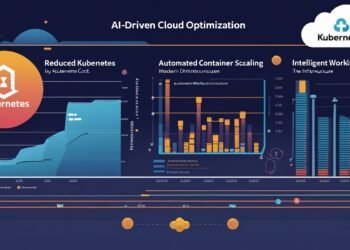Formula 1 (F1) is widely regarded as the pinnacle of motorsport, where cutting-edge technology, aerodynamics, and engineering excellence come together to create the fastest and most efficient race cars. In recent years, artificial intelligence (AI) has emerged as a game-changer in Formula 1, transforming various aspects of the sport, from car design and race strategy to real-time data analysis and driver performance optimization.
As teams strive for marginal gains that can make the difference between victory and defeat, AI-driven technologies have become an integral part of the decision-making process. In this article, we explore how AI is revolutionizing Formula 1 and what the future holds for its integration in the sport.
1. AI in Car Design and Aerodynamics
One of the most crucial aspects of Formula 1 is car design, where aerodynamics play a significant role in determining speed, downforce, and overall performance. Traditionally, teams have relied on wind tunnel testing and Computational Fluid Dynamics (CFD) simulations to develop their cars. However, AI is now being used to enhance these processes.
How AI is Improving Car Design:
- Faster Simulations: AI-powered CFD simulations allow teams to analyze thousands of aerodynamic configurations in a fraction of the time compared to traditional methods.
- Optimization of Components: AI algorithms help design optimized front wings, side pods, and rear wings, maximizing efficiency while complying with FIA regulations.
- Predictive Analysis: AI models can predict how minute design changes will affect the overall performance of the car before physical testing is conducted.
With AI-driven simulations, teams can test multiple designs virtually, reducing the need for costly physical wind tunnel tests and expediting the development process.
2. AI-Powered Race Strategy and Decision-Making
Race strategy is one of the most dynamic and unpredictable aspects of Formula 1. Teams must consider multiple variables, such as tire wear, fuel consumption, weather conditions, and competitors’ strategies. AI has become an invaluable tool for race engineers in making real-time, data-driven decisions.
AI’s Role in Race Strategy:
- Predictive Pit Stop Strategy: AI analyzes historical race data, real-time tire degradation, and weather conditions to recommend the optimal time for pit stops.
- Competitor Behavior Analysis: Machine learning algorithms assess rival teams’ historical strategies to anticipate their next moves.
- Dynamic Race Adjustments: AI helps race engineers adjust fuel usage, tire management, and aerodynamics settings in real-time for maximum efficiency.
For example, AI-driven predictive models can recommend whether a driver should attempt an undercut or overcut during pit stops, helping teams make split-second tactical decisions that could determine the race outcome.
3. AI in Driver Performance and Training
Formula 1 drivers undergo extensive physical and mental training, and AI is playing an increasing role in their preparation and performance analysis.
How AI Helps F1 Drivers:
- AI-Based Driver Simulators: Advanced AI-powered simulators replicate real race conditions, allowing drivers to practice racing on different circuits before the actual event.
- Telemetry Data Analysis: AI evaluates steering inputs, braking patterns, and acceleration data to pinpoint areas for improvement.
- Cognitive Performance Enhancement: AI-driven biometric sensors monitor heart rate, reaction times, and stress levels, helping teams optimize a driver’s mental performance.
By analyzing telemetry data and biometric feedback, AI allows drivers to fine-tune their skills and make data-backed adjustments to their racing style.
4. AI in Predictive Maintenance and Reliability
In Formula 1, technical failures can lead to race retirements and lost championship points. AI-powered predictive maintenance helps teams identify potential mechanical failures before they occur.
How AI Improves Reliability:
- Real-Time Sensor Monitoring: AI continuously tracks engine health, brake wear, and gearbox performance, identifying anomalies in real-time.
- Predictive Failure Detection: Machine learning algorithms analyze historical data to predict component failures and recommend preventive measures.
- Enhanced Pit Crew Efficiency: AI-powered tools optimize pit stop operations, reducing delays and improving efficiency.
By leveraging AI for predictive maintenance, F1 teams can minimize technical failures, ensure optimal vehicle performance, and reduce costly on-track retirements.
5. AI and Fan Engagement
Formula 1 has embraced AI-driven solutions to enhance fan engagement and broadcasting experiences.
AI’s Impact on Fan Experience:
- AI-Powered Race Insights: AI analyzes vast amounts of data to provide real-time insights, race predictions, and interactive stats during live broadcasts.
- Personalized Content: Machine learning algorithms tailor race highlights, replays, and digital content based on user preferences.
- AI Chatbots & Virtual Assistants: Formula 1 has introduced AI-powered chatbots that provide instant race information, historical stats, and event details.
AI-driven analytics have made F1 more engaging for fans, offering data-rich experiences that enhance their understanding of the sport.
6. The Future of AI in Formula 1
AI is rapidly evolving, and its integration into Formula 1 will only expand in the coming years. Some of the most exciting developments on the horizon include:
- Autonomous Race Simulations: AI-driven simulations will become more sophisticated, allowing teams to run virtual Grand Prix races with AI-controlled cars to test strategies.
- AI-Enhanced Refueling Strategies (If Reintroduced): If refueling ever returns to F1, AI will play a crucial role in optimizing fuel loads for race performance.
- Greater Integration of AI in Regulations Compliance: AI could be used by the FIA to monitor race infractions in real-time, ensuring fair competition.
Conclusion
AI is revolutionizing Formula 1, transforming everything from car design and aerodynamics to race strategy, driver training, predictive maintenance, and fan engagement. With AI-driven analytics and machine learning models, teams can make faster, data-driven decisions that enhance performance and maximize their competitive edge.
As technology continues to advance, AI’s role in Formula 1 will only grow, leading to even greater precision, efficiency, and innovation. Whether it’s optimizing race tactics, improving driver performance, or creating engaging fan experiences, AI is shaping the future of motorsports in ways never imagined before.
Formula 1 has always been at the forefront of innovation, and with AI taking center stage, the sport is set to reach new heights of technological excellence.

















